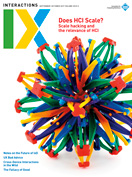Authors:
Hyosun Kwon, Holger Schnädelbach, Boriana Koleva, Steve Benford, Tom Schofield, Guy Schofield, Maho Oki, Koji Tsukada, Daniel Harrison, Richard Banks, Tim Regan, Martin Grayson
Delicate Hybrid Gift is a series of prototypes that employ ephemeral materials to wrap digital gifts. One example is the Gifting Table, a platform to exchange hybrid gifts that incorporate food as gift wrapping. The table uses camera vision to detect interaction with food items placed on its surface. To wrap the digital content, we used a spherified juice dessert, which forms a highly fragile film that encourages delicate handling. When a dessert is placed on the plate, the system identifies the color; when it breaks, it sends the corresponding digital gift (such as playing music) to the recipient.
Kwon, H., Koleva, B., Schnädelbach, H., and Benford, S. "It's not yet a gift": Understanding digital gifting. Proc. of the 2017 ACM Conference on Computer Supported Cooperative Work and Social Computing. ACM, New York, 2372–2384; https://doi.org/10.1145/2998181.2998225
Kwon, H., Schnädelbach, H., Koleva, B., and Benford, S. Delicate Hybrid Gift. Proc. of Research Through Design 2017. Figshare: https://doi.org/10.6084/m9.figshare.4746946.v1
Hyosun Kwon, Holger Schnädelbach, Boriana Koleva, and Steve Benford, Mixed Reality Lab, University of Nottingham
 |
A participant drawing a symbol of love with the dessert, suggesting a pattern as a key to unwrapping a gift. |
FieldVenturer is a project experimenting with a long-range, remote-controlled, and collaboratively piloted vehicle. It centers on the design, development, and public deployment of a Rover: a small tracked vehicle equipped with sensors and a camera and an elaborate command center, through which it can be controlled by members of the public. Via a series of FieldVenturer events, we are beginning to explore how experiencing spaces through a "drone's eye view" can play a part in promoting discussion around the reconfiguration and re-articulation of public spaces.
SchofieId, G. and Schofield, T. Exploring space with FieldVenturer. Proc. of Research Through Design 2017.
http://fieldventures.org/#/grid
Tom Schofield, Culture Lab, Newcastle University
Guy Schofield, University of York
 |
Exploring space with FieldVenturer. |
 |
First deployment of FieldVenturer. |
Currently, many projects embed smart LEDs—multiple LEDs dynamically controlled by computers—into clothes or accessories to support novel expressions or daily activities. However, most of them do not consider the "sparkle" of traditional jewelry. We propose a presentation technique for interactive jewelry called Sparklry, which can present sparkles on a jewel stone using internal LEDs. These sparkles are designed by integrating [1] a traditional jewel, (2) a light-shielding sheet with small slits, and (3) an LED array. We developed a prototype and several examples of jewelry to explore appropriate designs of slits and LED patterns.
Oki, M. and Tsukada, K. Sparklry: Designing "sparkle" of interactive jewelry. Proc. of the Eleventh International Conference on Tangible, Embedded, and Embodied Interaction. 2017, 647–651.
http://okimaho.com/en/project/sparklry/
Maho Oki, Future University Hakodate
Koji Tsukada, Future University Hakodate
 |
Broach-type prototype. |
 |
Example of the same jewelry without and with our system. |
 |
Showcase-type prototype. |
Thinga.Me is an iPhone app that allows users to digitally collect the things they see in the real world. With Thinga.Me, users can take photographs of their items and then easily remove the background, before arranging them in stylized digital collections that can be shared with others. A range of different backgrounds are included in the app, allowing users to present their items in 2D or 3D displays. By giving users the illusion of carrying their items with them in their pocket, we were able to explore and better understand the difference between physical and digital collection practices.
Harrison, D., Banks, R., Regan, T. and Grayson, M. Presenting physical things digitally: New collecting practices. Proc. of Research Through Design 2017.
DOI:10.6084/m9.figshare.4747006
Daniel Harrison, University College London and Microsoft Research Cambridge, Richard Banks, Microsoft Research Cambridge, Tim Regan, Microsoft Research Cambridge, Martin Grayson, Microsoft Research Cambridge
 |
Removing the background before adding the item to a collection. |
 |
The digital and physical collections shown together. |
©2017 ACM 1072-5520/17/09 $15.00
Permission to make digital or hard copies of all or part of this work for personal or classroom use is granted without fee provided that copies are not made or distributed for profit or commercial advantage and that copies bear this notice and the full citation on the first page. To copy otherwise, to republish, to post on servers or to redistribute to lists, requires prior specific permission and/or a fee.
The Digital Library is published by the Association for Computing Machinery. Copyright © 2017 ACM, Inc.







Post Comment
No Comments Found